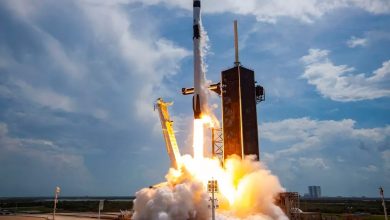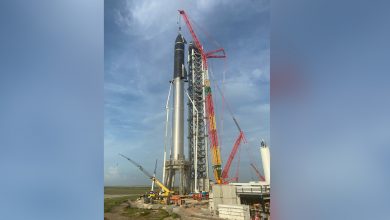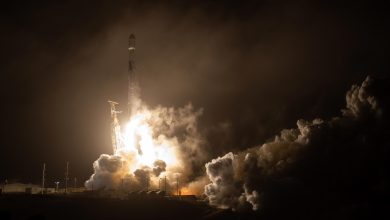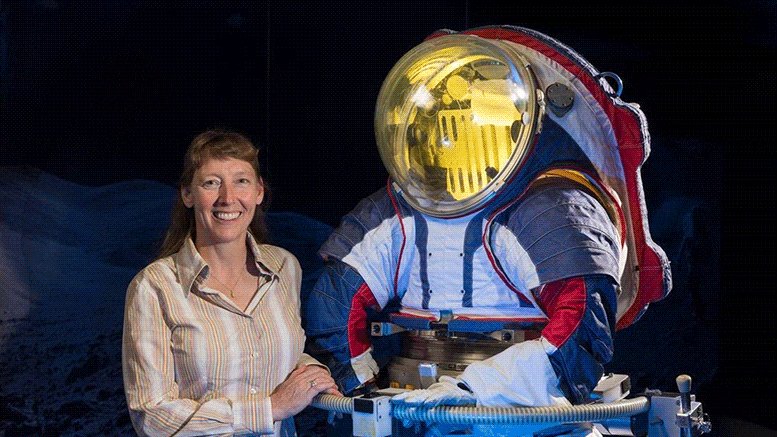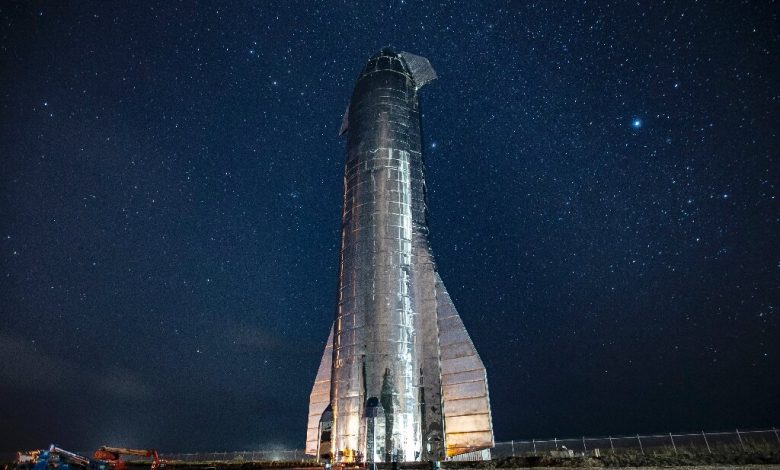
Space Exploration Technologies Corp. (SpaceX) has won a $3 billion contract from the National Aeronautics and Space Administration (NASA) to build a lunar lander designed for missions to the Moon. These missions will be part of NASA’s Artemis program, which plans to restore American presence on the lunar surface. As part of its bid, SpaceX submitted its Starship next-generation spacecraft from the proposal, with the company currently testing early-stage prototypes in its facilities in Boca Chica, Texas.
In 2020, NASA awarded contracts to three commercial teams — SpaceX, Dynetics and Blue Origin — for the agency’s Human Landing System (HLS) program. They asked each of these companies to develop an innovative landing system to be used under the Artemis program to ferry astronauts down to the lunar surface.
On Friday (April 16), NASA announced that SpaceX’s Starship had beat out the other two competitors, winning the $2.9 billion contract to build the Artemis lunar lander.
“We have awarded SpaceX to continue the development of our integrated human landing system,” Lisa Watson-Morgan, HLS program manager, said during a news conference Friday (April 16). “We’re confident in NASA’s partnership with SpaceX to help us achieve the Artemis mission and look forward to continuing our work toward landing astronauts on the moon, to prepare for the next giant leap towards Mars.”

Photograph by DAVID MCNEW/AFP via Getty Images
NASA’s Artemis program
Announced in 2017 under the Trump administration and named in 2019, the Artemis program aims to return U.S. astronauts to the lunar surface for the first time since the Apollo 17 mission in 1972, including landing the first woman and the first person of color on the moon.
The Biden administration has voiced support for the program, as well. But while Trump’s team pushed for a crewed mission to the moon’s surface in 2024, Congress has not provided the amount of funding for the program that NASA says would be needed for that time table. Due to a smaller budget than requested, and delays during the development of the SLS rocket and other parts of the program, NASA is reevaluating the soonest date that it could launch people on a lunar mission.
The Artemis I mission, which will launch no sooner than late 2021, will be an uncrewed test flight of Orion and SLS. Artemis II will follow, using SLS and Orion to fly a crew around the moon and back but not land, similar to 1968’s Apollo 8 mission. Then Artemis III will use SLS, Orion, and SpaceX’s Starship to complete the journey to the moon’s surface.
To fly the quarter-million miles to the moon, astronauts will travel on NASA’s SLS heavy-lift rocket and Orion deep-space spacecraft. The plan then calls for Orion to dock with a Human Landing System (HLS)—which is what NASA selected SpaceX’s Starship for. This spacecraft will wait in lunar orbit up to a hundred days before the astronauts arrive and then land them on the surface. To return to Earth, the crew will launch off the moon on Starship, transfer back to the waiting Orion spacecraft, and fly home.
With its Artemis program, NASA aims to land the first woman and the first person of colour to land on the moon. This will be the first time humans will walk on the moon since 1972, with the final lunar landing mission of NASA’s Apollo program.
But “this time … our goal is to return to the moon in a sustainable way to gain insight and bring back lessons that will help propel us into greater exploration that’s never been done before,” Kathy Lueders, associate administrator for NASA’s Human Exploration and Operations Mission Directorate, said during the news conference.
“When NASA returns to the moon with Artemis program, it will go in a way that reflects the world today,” Leuders said.
This goal was set to happen by 2024 under the Trump administration but the Biden administration has not yet specified whether it will stick to this very ambitious deadline.
“The NASA team will have the insight into the progress that SpaceX is making and if they’re hitting their milestones we may have a shot at 2024,” acting NASA Administrator Steve Jurczyk said during the conference.
NASA was expected to choose two of the three companies in the running to build the lander, as the agency often has multiple providers to ensure a backup and to keep the energy of competition. However, they have chosen to go ahead with SpaceX alone.
While NASA wanted “to preserve a competitive environment at this stage of the HLS Program,” the agency said in a document obtained by The Washington Post, there were budgetary concerns. In response, SpaceX updated the cost of their lander to fit “within NASA’s current budget.”
When asked if, down the road, NASA might reevaluate having a second company build a lunar lander, Jurczyk said that “we’re moving forward. We don’t anticipate revisiting this selection.”
The $2.9 billion contract carries roughly 13% of the amount that NASA’s lunar module would have cost for the agency’s Apollo program, which would have cost about $23 billion in 2020, Casey Dreier, Chief Advocate & Senior Space Policy Advisor at The Planetary Society, estimated on Twitter.
For its lunar lander design, SpaceX has pitched a variation on its Starship spacecraft. SpaceX is already on its 15th Starship prototype and has been regularly testing the craft. Many of the prototypes have so far crashed and exploded, with SN10, its 10th Starship prototype being the first to land (though it exploded shortly after landing).
“Just from the human landing system standpoint, we had 27 functional performance requirements that we asked the offers, including SpaceX, to respond to,” Watson-Morgan told Space.com during the conference.
“And we went through a very detailed design, technical design, construction standards, safety, as well as health and human performance work, and all of that was pulled together, and that shifted, various aspects of their Starship … they were able to meet or exceed the items that we had that we require for safe human landing,” Watson-Morgan added.
The company is developing Starship to one day carry humans and cargo to the moon, Mars and even more distant destinations, launching the craft aboard the company’s Super Heavy rocket. NASA announced today that Super Heavy will launch Starship to the moon as part of the Artemis program.
During this news conference, NASA also announced another competition, this time for commercial transportation services to help make human exploration of the moon more sustainable.
“We’re accelerating what we call the human lunar landing services procurement. This competition will provide regularly returning services to the lunar surface that will enable these crewed missions on a sustainable basis,” Mark Kirasich, deputy associate administrator for NASA’s Advanced Exploration Systems division, said.
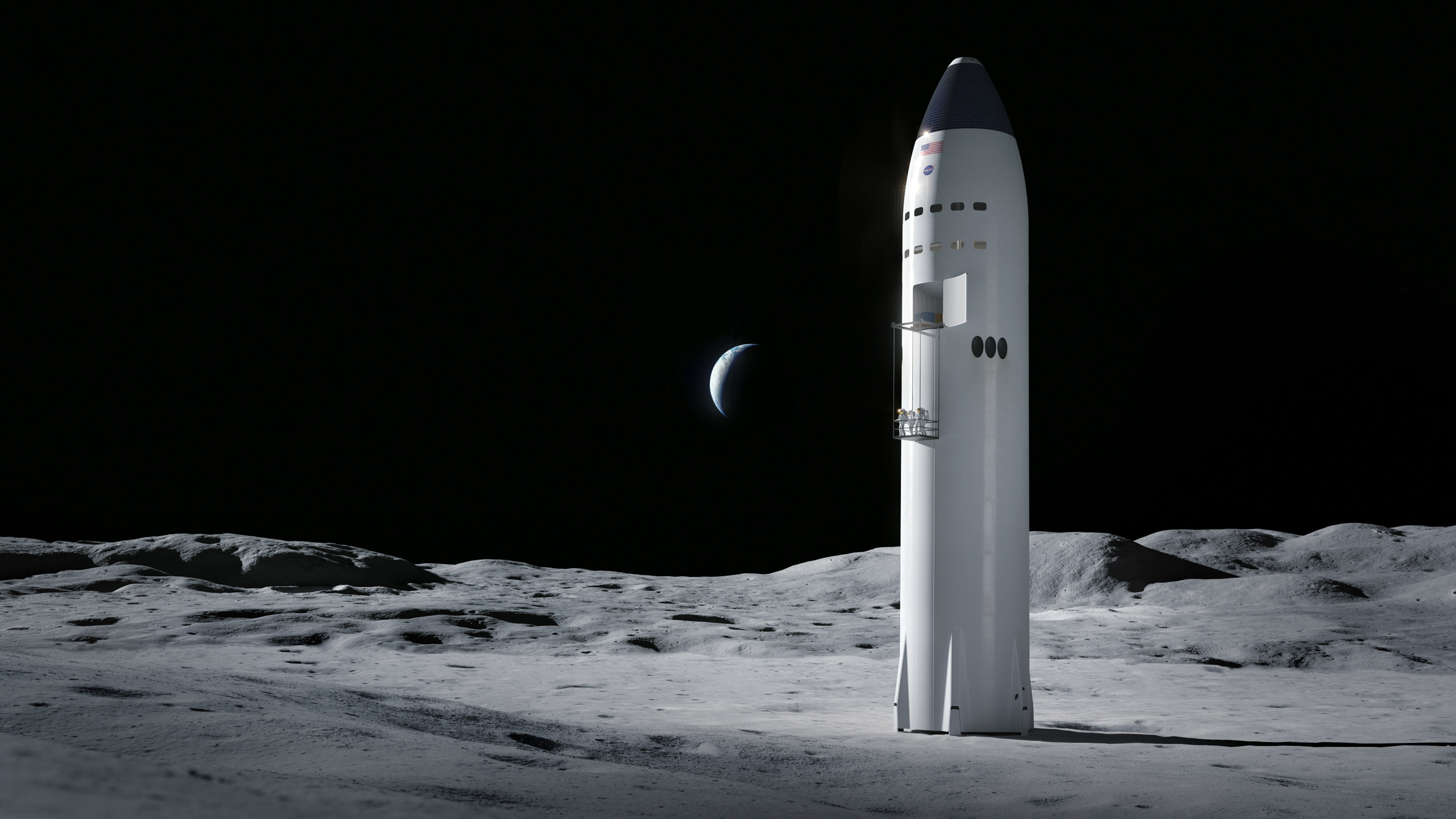
How SpaceX’s Starship will land people and cargo on the Moon, Mars and beyond
Starship is a heavy-lift rocket that is currently being developed by SpaceX. The full rocket will consist of two pieces: a 230-foot-tall booster called Super Heavy, and a 165-foot-tall upper stage called Starship. (Together, the booster and upper stage of the rocket are also known as Starship). In a departure from past launch vehicles, the goal is to build a rocket that can launch and land itself. The company’s Falcon 9 rocket, which NASA uses to take astronauts to the International Space Station (ISS), has a booster stage that can achieve this feat, allowing it to be reused.
During missions to the moon, the Super Heavy booster will help launch Starship off Earth and on its way to lunar orbit, where the upper part of the rocket will wait to ferry astronauts to the surface using its own engines.
Starting in December 2020, SpaceX has launched four prototypes of the Starship rocket on high-altitude flight tests. So far, Starship rockets have flown as high as 12 kilometres, but each of the prototypes exploded during attempted landings. NASA said that its award requires SpaceX to perform an uncrewed demonstration of a lunar landing before shuttling people to the moon.
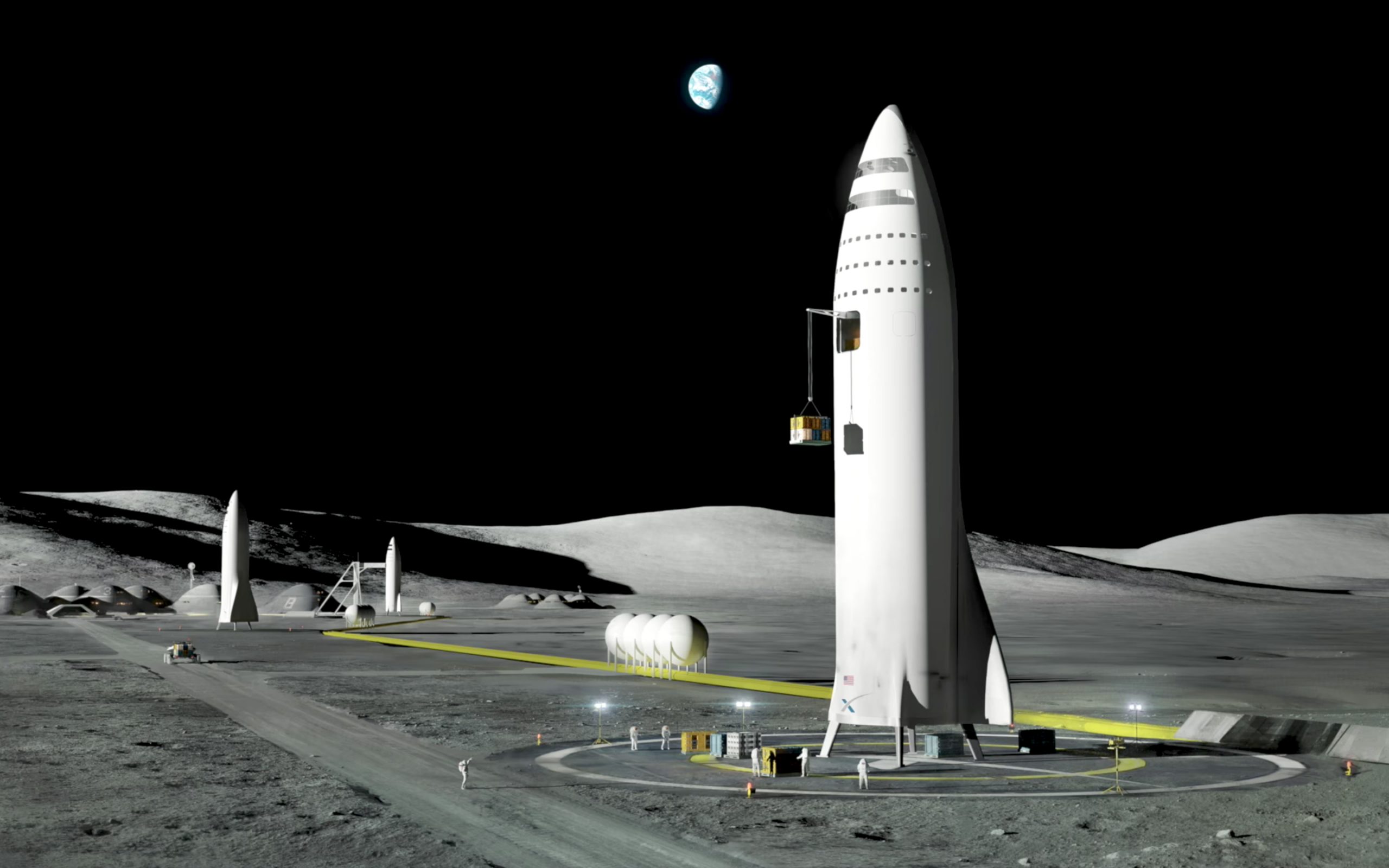
The other companies competing to build NASA’s lunar lander
SpaceX was one of three teams competing to win NASA’s contract, including the team organized by Blue Origin, and the separate design from Dynetics.
Perhaps the single biggest surprise from NASA’s announcement is that, out of three finalists, NASA chose to go with just SpaceX. Typically, NASA selects contractors in pairs so that the space agency has two options for spacecraft in critical missions, and so it can continue with a given program if one of the contractors fails to deliver. NASA’s Commercial Cargo Program, which sends supplies to the ISS, works with both SpaceX and Northrop Grumman, for example, and the space agency’s Commercial Crew Program has contracted with both SpaceX and Boeing.
The move to go with just SpaceX signals NASA’s confidence that the company can build a version of Starship that is capable of landing on the moon. Selecting a single contractor also means that NASA can attempt to get back to the moon on the budget Congress has approved, as SpaceX’s $2.9 billion bid was substantially less expensive than the competing proposals, and the company plans to pay for more than half of Starship’s development costs. But it also means that NASA has no backup option for now.
“It’s unusually bold for [NASA] to commit to a single provider, and particularly one with such a dramatically ambitious spacecraft; Starship is nothing but ambitious,” says Casey Dreier, the chief advocate and space policy adviser with the nonprofit Planetary Society. While Starship will first ferry people to and from the moon, it’s ultimately designed to send people to Mars. That means that as NASA invests in Starship, “they’re also investing second-order in getting humans to Mars,” Dreier says.
NASA is keeping its options open for future Artemis missions. The agency said that the SpaceX contract covered just Artemis III and an earlier uncrewed demonstration mission. For Artemis IV and beyond, NASA plans to let other companies bid on ferrying crews to and from the moon.
The expected date when Starship could fly to the moon
In a call with reporters on April 16, NASA officials said that Starship will land U.S. astronauts on the lunar surface no sooner than 2024. NASA stressed that the agency was reviewing the Artemis timeframe and made no firm commitments. “We will not launch until we are ready—we will not launch until all systems are safe,” NASA program manager Lisa Watson-Morgan said during the call.
NASA’s Artemis program isn’t the only lunar mission that SpaceX hopes to launch. In 2018, SpaceX signed an agreement with Japanese fashion billionaire Yusaku Maezawa to send himself and a group of artists around the moon and back. The company hopes to launch that mission, called dearMoon, in 2023.
A mission to the moon is extraordinarily ambitious, however, and setbacks could occur as NASA, SpaceX, and other organizations prepare the hardware needed to safely land humans on the lunar surface. But once astronauts return, NASA hopes that they will live and work on the moon for long periods of time—testing the technologies that will be required to venture on to Mars.
“I think the 2020s are going to be the most exciting decades in space since the Apollo era,” Dreier says, “and this is one of the big reasons why.”


